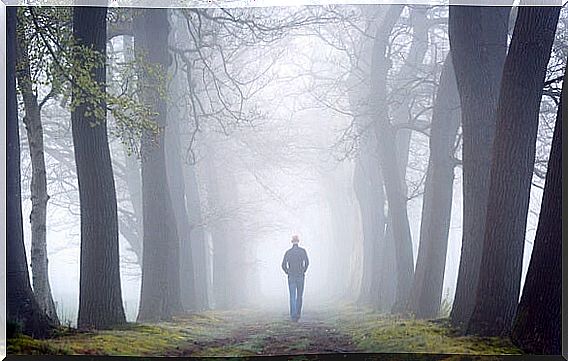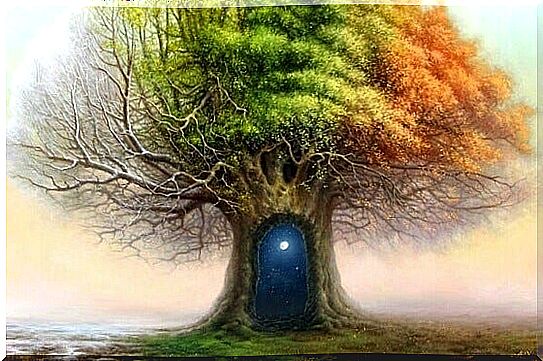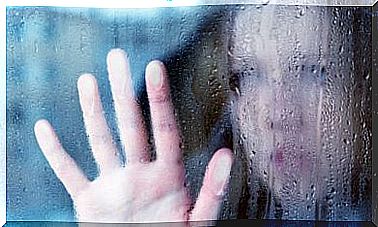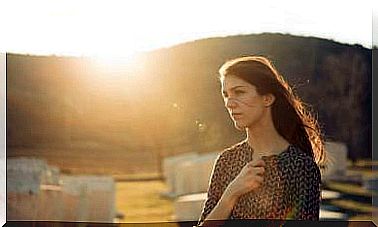The Forest Test, A Test Of Relational Psychoanalysis

Blockages that veto our happiness, entrenched fears, values that govern our choices and behaviors … The forest test tries to elucidate many of these questions starting from the approach from which it was designed: relational psychoanalysis. Thus, and within this theory, our psychological suffering is rooted in an underlying architecture that we must bring to light in order to heal and advance.
For those who have not heard of this projective and relational test, suffice it to say that it is not exactly a conventional instrument. The forest test does not have sufficient reliability and validity to be part of routine clinical practice. However, we cannot take away its relevance within the context and theoretical framework from which it was created, and which is undoubtedly worth knowing.
Relational psychoanalysis is a more or less recent way of doing psychotherapy that has meant an advance within psychoanalysis itself as we know it. Its main objective is to promote the emotional development of the human being and for this, it must treat those knots and blockages that limit us and cause pain. In this approach, and as an example only, the classic concepts of ego, self and superego are left aside.
What the relational psychotherapist intends is to rebuild the patient. To do this, it will guide you so that you can interact (relate) with your environment in a healthier way. It will train you to be able to see the world from all angles and without fear, helping you navigate those darker areas that you previously did not dare to enter. For this reason, the forest test is a good test to start from to get to know a little better that underlying architecture of the person.

What does the forest test measure and what is its origin?
The forest test, rather than measuring a dimension, competence or ability, aims to act as a projection of the emotional world of the person. In our space we have already spoken on more than one occasion about the so-called projective tests, such as, for example, the tree test or the family test. These are essentially psychological instruments that serve to complement an evaluation.
By themselves and applied exclusively, they can never be valid. Other strategies such as interviews, observation and other psychological tests with proven reliability and validity are needed to be able to reach an adequate diagnosis or a starting point from which to start the intervention. Thus, within the relational psychoanalysis approach, this test is undoubtedly one of the most used for the following reasons:
- It reveals the emotional state of the patient.
- It reveals possible unresolved childhood conflicts and the weight of the past in the present of the person.
- You can see the coping strategies that you have or do not have.
- Values.
- Reference persons of the patient.
- Fears
- Personal wishes, expectations.
The forest for psychoanalysis
The forest is a scene with a very clear mystical-emotional component for any culture. Carl Jung himself explained in his book “The archetypes and the collective subconscious” that in these scenarios, our greatest dangers and the most atavistic fears have been contained since ancient times. In some way, walking through them sometimes means a return to that ancestral past where we can rediscover the deepest part of our being.

How is the forest test applied?
The forest test is carried out starting from a visualization. The therapist will be accompanied by a pencil and paper to guide the patient in each question and then write down each answer that he / she facilitates in the process. The test is simple, and all that is needed is to create a comfortable and safe environment so that the person can carry out that inner journey naturally.
The first step is to invite the patient to visualize a forest. A quiet setting surrounded by trees through which you walk alone. Once seen there, the following questions will be asked:
- Are the trees widely scattered? Is it a dense, labyrinthine forest or is there a certain order?
- Can you move forward comfortably or do you have to overcome many obstacles?
- Is it day or night?
- Is the forest healthy or is it burned or collapsed?
- Now as you go you find a key. What do you do with it?
- Now you keep walking and you meet an animal. Which? Does he threaten you, do you feel afraid or do you approach him to caress him?
- Next, on your walk through the woods, you come to a cabin. You knock on the door and someone opens for you. Who is that person?
- Lastly, visualize yourself entering that cabin. You are inside and everything has suddenly disappeared, everything is blank for a few seconds because you are reaching another place. Tell me where you are after this step. Tell me what you see and how you feel.

To conclude, as we can see, the questions that make up the forest test shape a very revealing inner journey. If the patient collaborates and performs the exercise effectively feeling a participant, we will obtain a lot of information. We can intuit their emotional state by the shape and state of that forest (if it is burned, if it is night …). We will in turn see what his fears are, what his main reference person and what the most important or decisive scenario for him.
This information, put into context with interviews and other tests, can be of use to relational psychoanalysis therapists.









